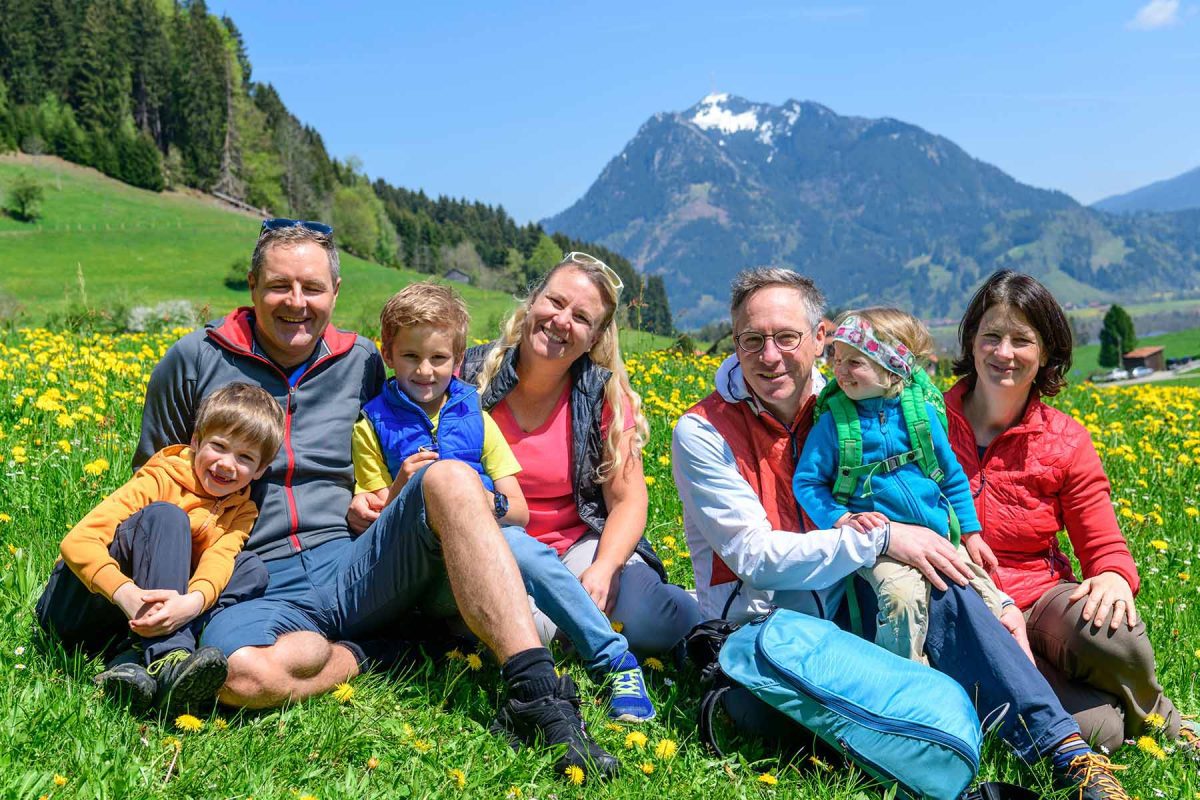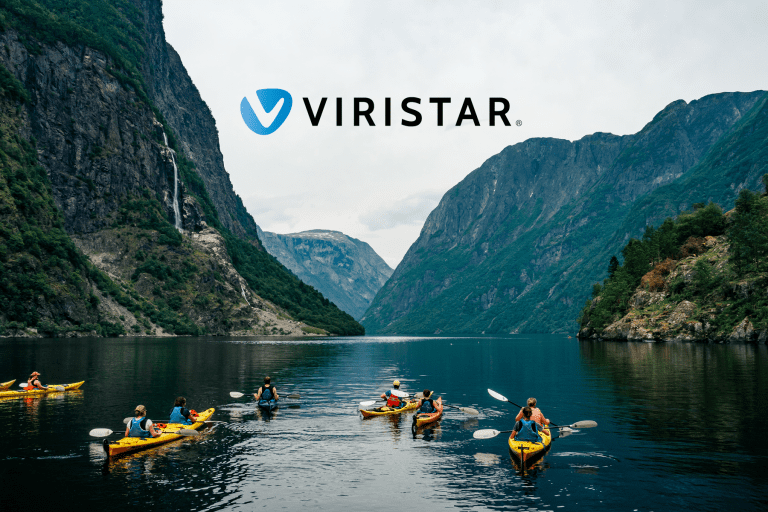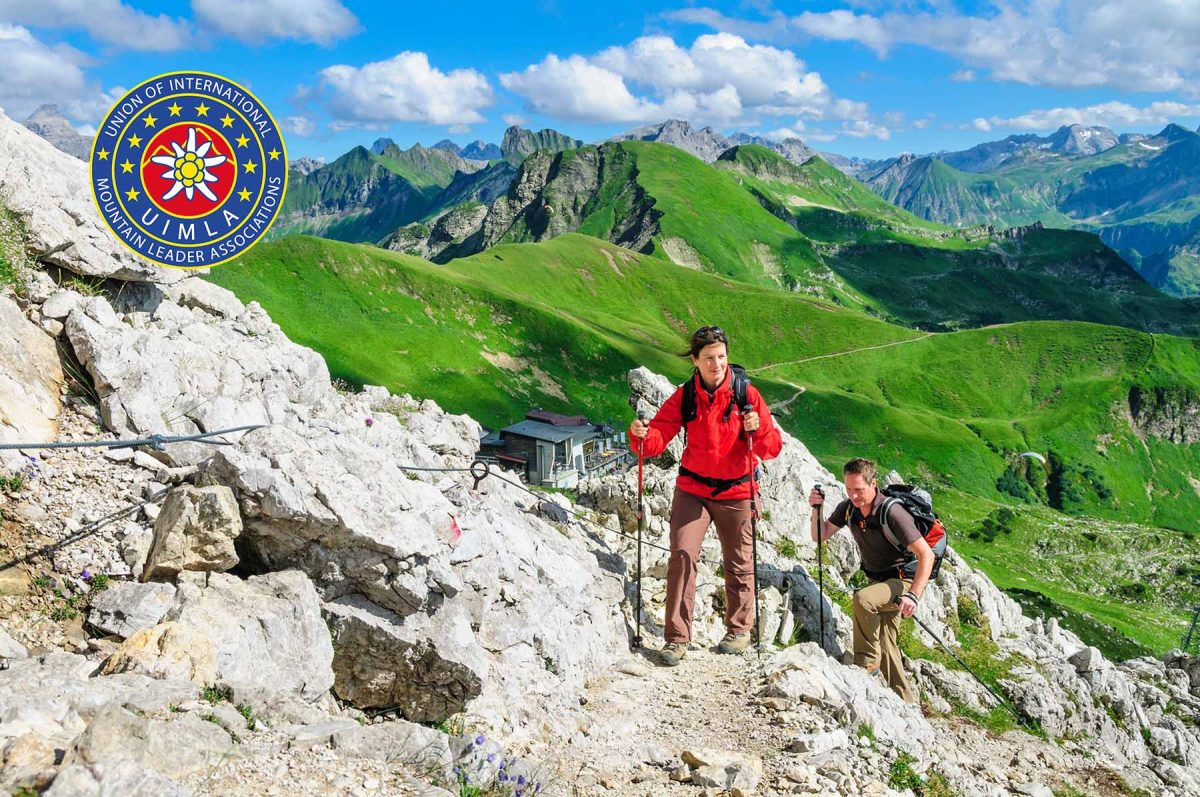
The Union of International Mountain Leader Associations (UIMLA) published a new standard describing the requirements and process for achieving certification as an International Mountain Leader.
The standard, published November 2024, is an update and significant expansion of the previous version of the standard, which was released in 2013.
The standard documents the skills and knowledge required of an International Mountain Leader—from land navigation, weather, and first aid, to rescue, environmental awareness, group management and more.
The IML training and qualification scheme provides an important structure to help ensure that hiking trips and trekking expeditions in the mountains are conducted to high levels of quality and safety.
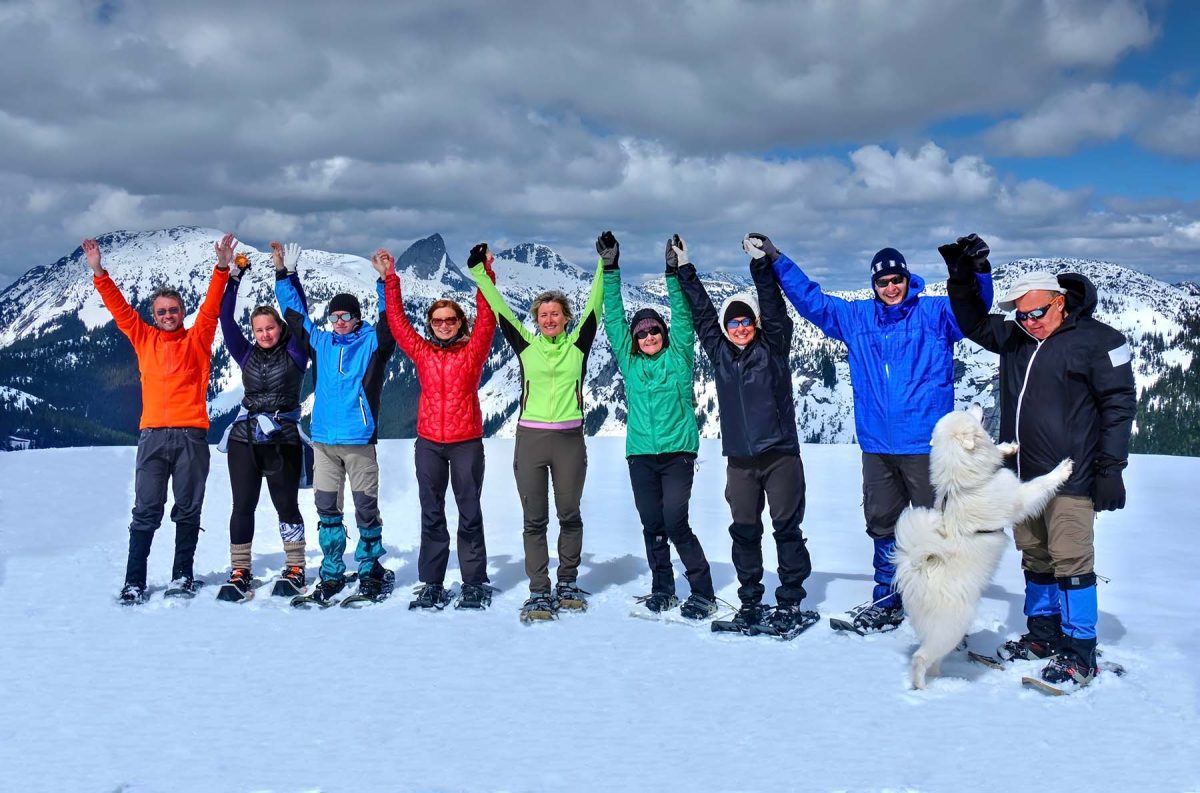
The International Mountain Leader Standard
The IML standard establishes the knowledge and technical, pedagogical and physical capabilities required of an IML to lead and educate people in the mountains worldwide.
The standard lays out the process—which can take several years—by which an individual can become certified as an International Mountain Leader.
The international standard is managed by UIMLA, and national-level member associations in some 27 countries coordinate the delivery of mountain leadership training to the specifications of the standard.
The standard, which originated in Europe in 1992, is designed to apply to mountain environments globally. The standard recommends that aspirants seeking IML qualification gain mountain experience in multiple countries, and requires training to address international considerations such as language, mapping and country-specific regulations.
The standard addresses travel in winter and summer, at high altitude and on snow, and in severe weather and remote locations.
The existence of the international standard provides an assurance of quality and competence that facilitates the ability of a mountain leader trained in one country to work professionally as a mountain leader in other countries.
The IML qualification covers hiking and trekking in the mountains.
The qualification covers some technical skills such as snow/ice belays, ice axe belays, snow anchors, self-arrest, handlines and other fixed equipment, cutting steps, avalanche hazard assessment, and avalanche rescue. It does not, however, certify the leader in technical mountaineering (including alpinism, roped climbing or skiing), which is addressed by the International Federation of Mountain Guides Associations (IFMGA/UIAGM).
UIMLA says, “The primary goal of the IML is to assist people in the discovery and exploration of the natural and cultural environment of the outdoors, particularly in hill and mountain regions, including education of environmental knowledge and the teaching of technical skills, while maintaining the safety of their group.”
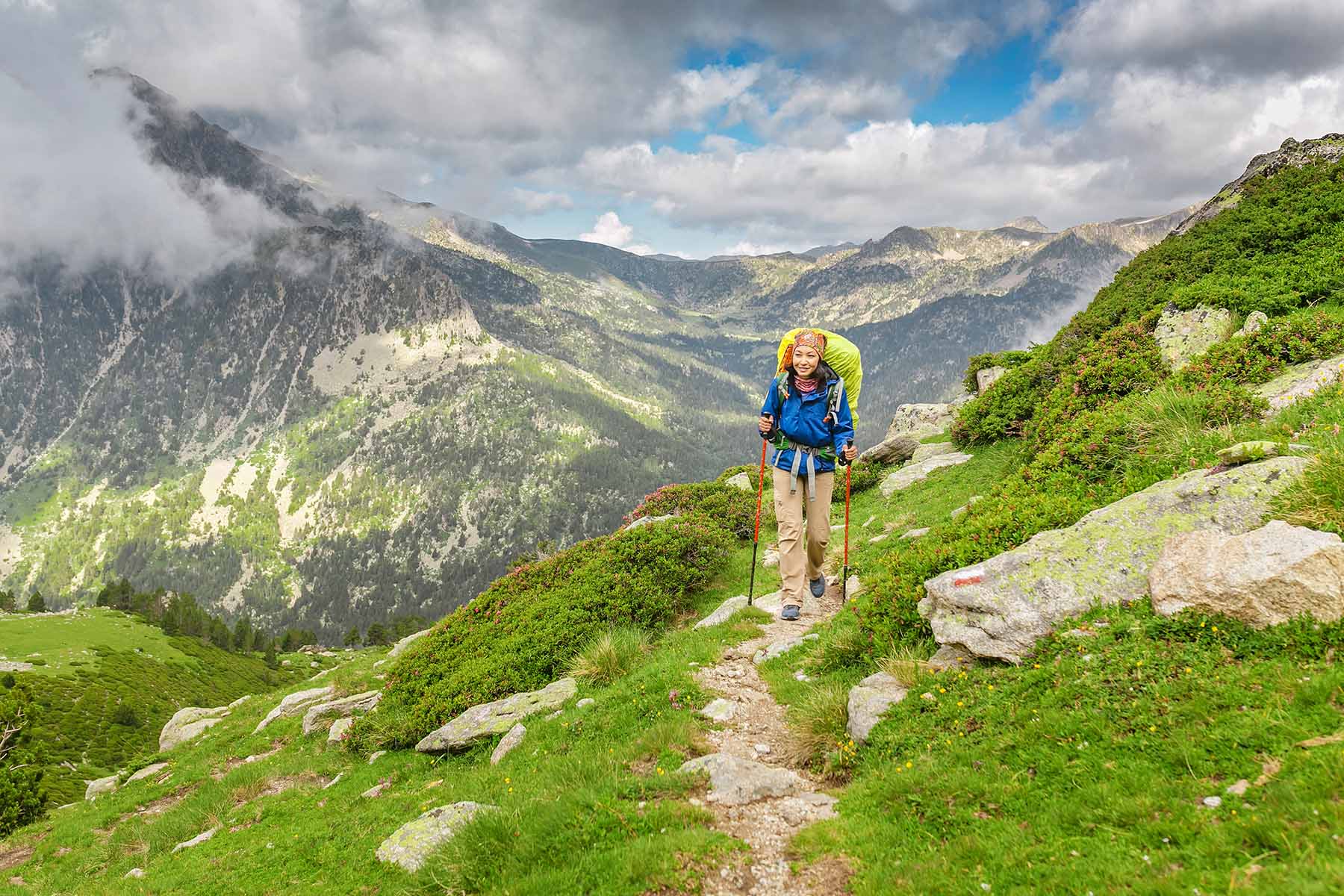
Experience Required
The pathway to achieve the IML award includes four steps:
- Prior mountain experience, before starting training
- Training, largely in the mountains
- Consolidation: experience putting training into practice, before final examination
- Assessment: multi-day field-based examination of mountain leadership skills and knowledge
The process is similar to the steps for achieving mountain guide certification (to lead mountaineering and climbing experiences).
The IML standard specifies that mountain leaders should have at least 75 days’ experience in the mountains prior to their final exam, and go through at least 50 days of formal training and assessment.
Experience standards are as follows:
Prior to acceptance into training
- Minimum 20 mountain walking days in summer, 10 mountain walking days in winter, over at least 12 months
Training
- Minimum 10 days in summer conditions, 10 days in winter (snow-covered) terrain
- Minimum 50 days of training and assessment (combined)
Consolidation period
- Recommended: minimum 30 days in summer, 15 days in winter
- Minimum 10 days professional mountain leadership experience
Assessment
- Minimum five days in summer conditions, five days in winter conditions
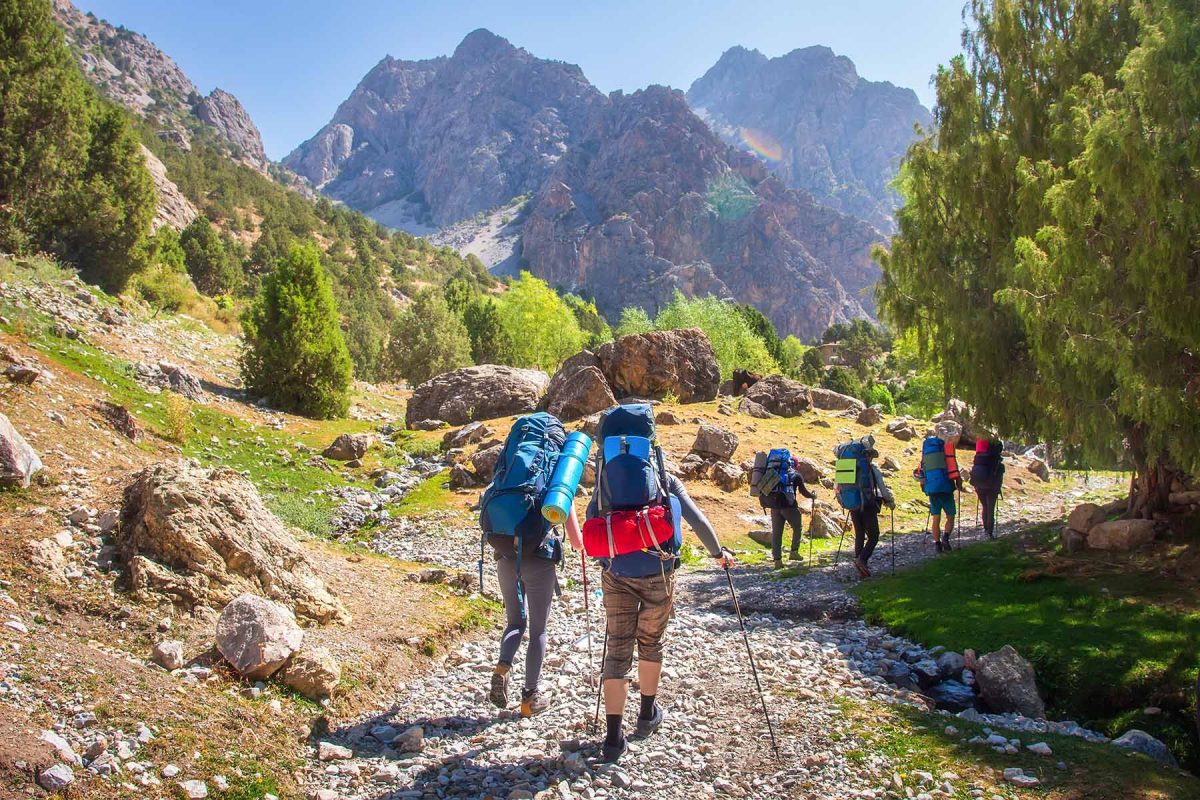
Insurance
International Mountain Leaders are required to have a public liability insurance policy.
Public liability insurance helps pay claims made by the general public, such as clients and visitors. It is a predecessor to and similar to general liability insurance.
In some areas of the world, such as parts of Africa, obtaining liability insurance for outdoor and adventure activities is difficult at best, but a functioning insurance marketplace in a given region is an indicator of a well-developed outdoor adventure sector.
Attention to Diversity, Equity and Inclusion
The standards allow for additional requirements from national mountain leader associations or legal authorities. However, the new standard now notes that the requirements “may not be exclusive to human diversity or gender.”
Making outdoor leadership opportunities accessible to people from groups who have experienced systemic barriers to access, on the basis of characteristics such as gender, is an important step forward in advancing an equitable and inclusive outdoor and adventure sector.
Organizations such as UIMLA which operate in multiple countries with a wide range of views have a responsibility to support equity and inclusion while recognizing the cultural values and laws of the nations where they operate.
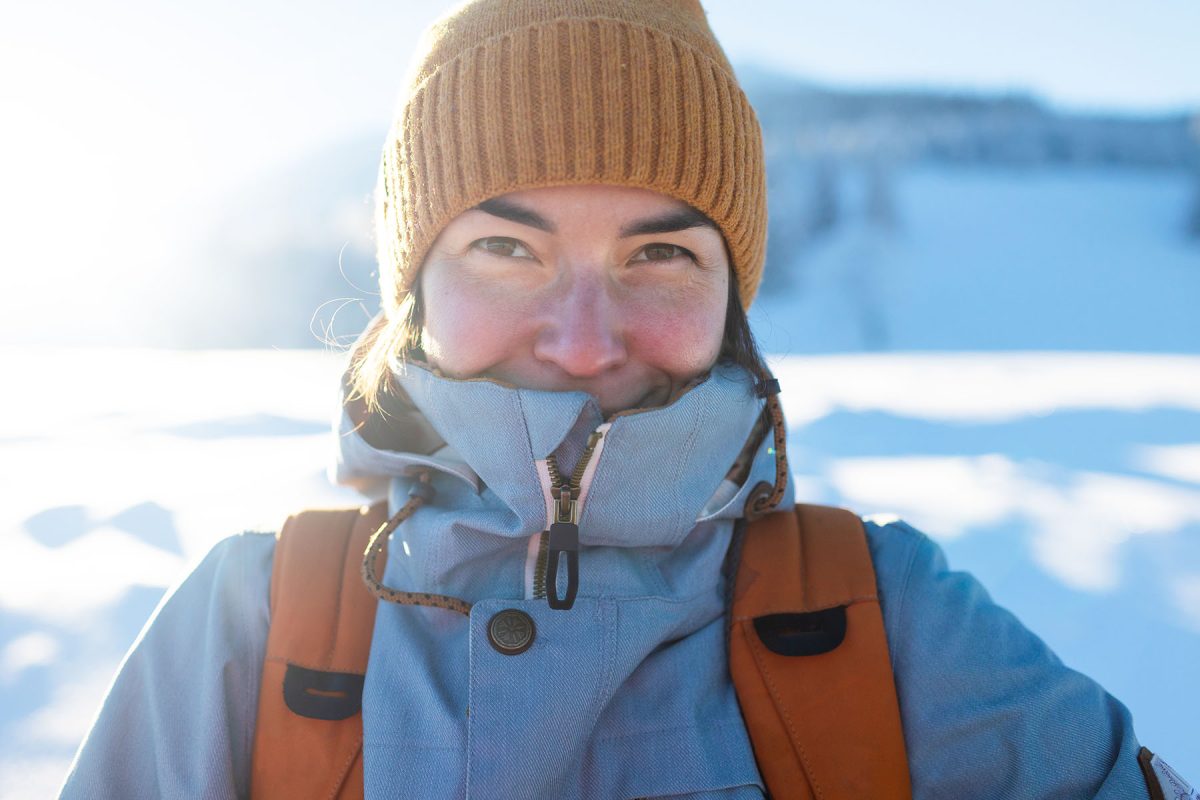
Training and Competency
The standard requires that would-be IMLs receive training and demonstrate competency in a variety of topics, including:
- Safety in mountainous terrain and river crossing
- Navigation and planning
- First aid, medical assistance and rescue
- Group management, safeguarding and leadership
- Travel risk management, emergency planning and incident reporting
- Teaching (such as facilitation, coaching, and cultural interpretation)
- The mountain environment and local culture
- Sustainability, environmental awareness and minimum impact
- Anatomy and physiology (conditioning, nutrition, injury prevention, rest, altitude effects, etc.)
- Mountain weather
- Mountain survival and shelters
- Physical ability & movement skills (e.g. carry 8-kg pack 10 km with 1500m elevation gain in six hours)
- Legal and economic considerations
- Multi-day activities, treks and expeditions
- Movement and skills on snow-covered terrain
- Movement and safety on icy terrain
This list, which is the result of more than 20 years of development and refinement, covers a wide array of capacities that an IML should have.
Section three of the standard describes each topic in greater detail, over some eight pages.
National-level member associations of UIMLA, rather than UIMLA itself, see to the delivery of the training and competency assessments. The member associations may conduct training and assessment themselves, or oversee the provision of those activities by others.
For example, in the UK, UIMLA’s relevant member association, the British Association of International Mountain Leaders (BAIML), represents IMLs in the UK, but Mountain Training UK & Ireland (MTUKI) administers the IML qualification, and National Outdoor Centres such as Plas Y Brenin deliver the training and assessment courses.
UIMLA does not directly oversee the development of detailed training curricula connected to IML training and competency standards, or the delivery of that training and its associated assessments.
However, UIMLA has a detailed process (including technical review, an in-person assessment and compliance audits), described in its Statutes and its Membership Policies and Procedures documents, to help ensure the adequacy of training and assessment activities.
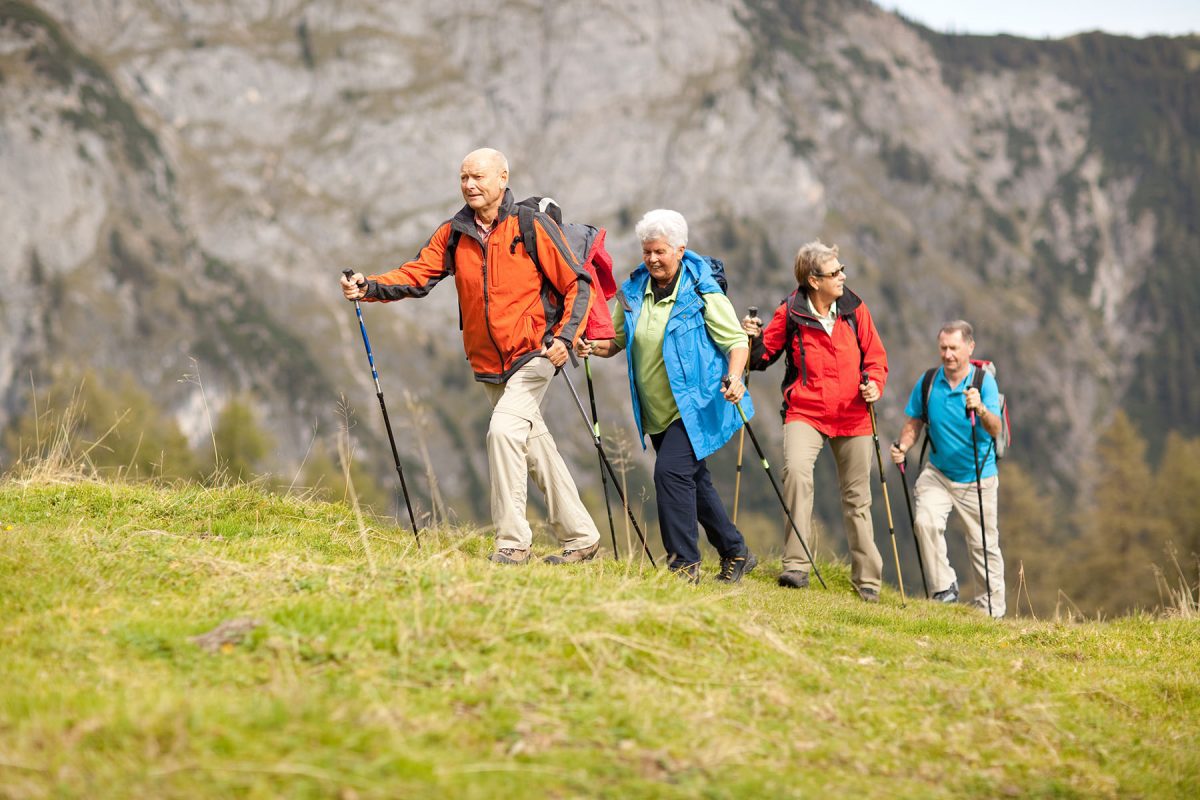
Continuing Professional Development
UIMLA requires that International Mountain Leaders go through at least three days of Continuing Professional Development (CPD) over a six-year period.
CPD topics include the IML competencies as described in the 2024 standard.
CPD in mountain activities has been at times a contentious topic, for example following a safety incident where the adequacy of continuing education of the activity leader has been raised.
UIMLA supports its member associations in providing CPD opportunities to its individual IMLs, and also facilitates delivery of CPD experiences to the worldwide IML network.
Viristar is a provider of CPD on mountain safety to the International Mountain Leader community.
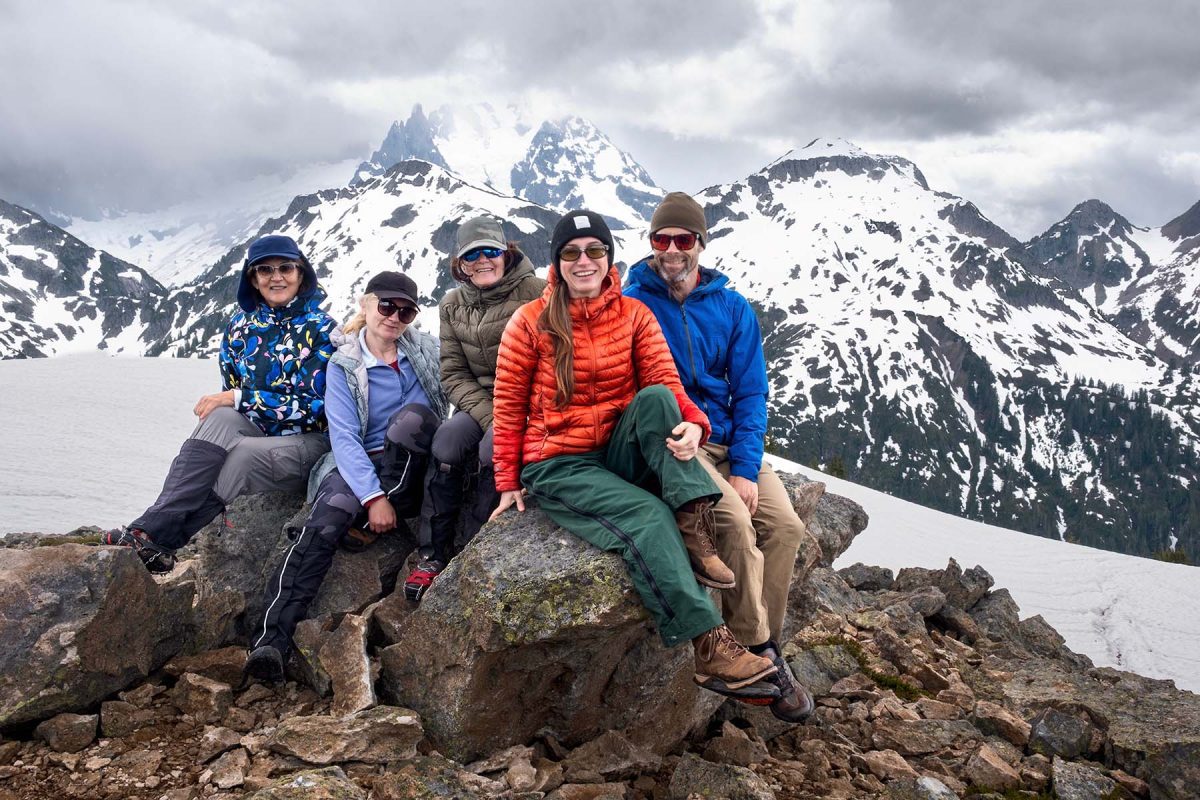
The 2024 Standard
UIMLA’s new standard contains a number of new topics not included in the 2013 standard, including:
- Glacier hazards
- Movement on icy terrain
- Additional detail on altitude and acute mountain sickness
- Digital mapping
- Safeguarding of vulnerable persons
- Travel risk management, emergency planning and incident reporting
- Cultural history interpretation
- Environmental education and minimum impact (leave no trace) travel
The revision process ran from early 2022 through late 2024, and involved a working group with IMLs from eight nations and input from 18 national associations.
Why Are Outdoor and Adventure Standards Important?
Standards in the outdoor, travel, and adventure sectors help managers and in-the-field leaders understand good practice criteria for risk management, effectiveness in achieving programmatic outcomes, and overall program quality.
Standards can be voluntary, set by industry bodies—such as UIMLA—or compulsory, established by regulatory authorities.
- In 1993, four children drowned on a kayak trip in the UK. The UK government set up safety standards for adventurous activities.
- In 2013, following the death of a child on a Himalayan trek, authorities in the state of Maharashtra, India directed that adventure safety guidelines be developed.
- In 2017, seven high school students and a teacher died in an avalanche on a school trip—a mountain safety course—to Mt. Chausu near Nasu, Tochigi prefecture, Japan. The Japanese outdoor sector pushed for adventure safety standards.
- In 2020, a child drowned on during a rafting experience on a school camp in Africa. The South African Adventure Industry Association was formed to develop adventure standards, and the southern Africa adventure tourism sector also worked to develop standards.
- In 2022, eight rescuers died during a rescue of injured paragliders in the eastern European nation of Georgia. The government set about establishing mandatory safety standards for high-risk adventure activities. (Viristar was approached to lead this standards development process, and Viristar staff drafted the regulations.)
- Organizations based in the Middle East, east Asia and Europe, concerned about safety and quality, approached Viristar about assessing standards conformance for outdoor recreation and adventure tourism providers. Viristar developed Adventure Safety Accreditation standards.
Societal expectations for safety and quality of adventurous activities, school excursions and trips, and experiential adventure programs have increased over time. And the industry has continued on a path of professionalization over the decades, gradually improving performance around topics from risk management to environmental sustainability, curriculum, and inclusion.
UIMLA’s standard is a valuable addition to other published standards in the outdoor sector—from experiential adventure to outdoor adventure in Singapore and adventure tourism in India—that can help provide better, safer outdoor experiences, and more a sustainable and successful outdoor and adventure sector.
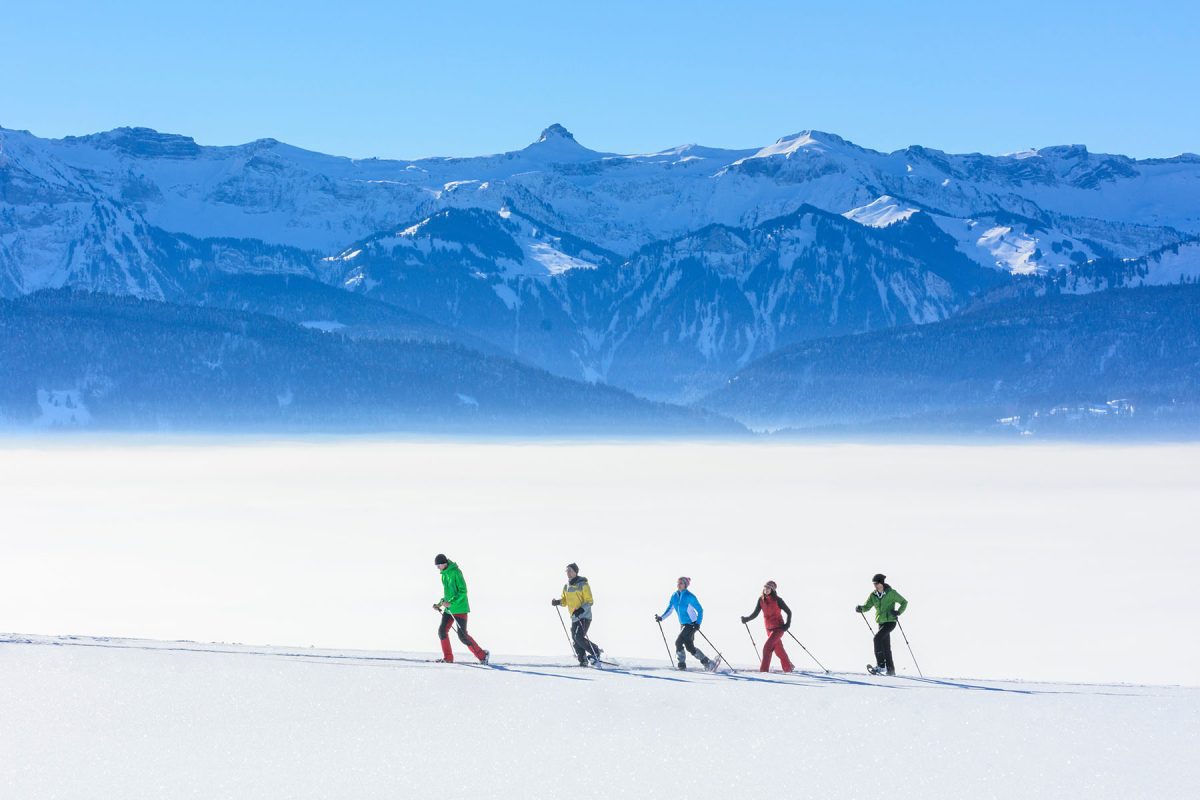
What Makes for an Effective Standards Scheme?
Published safety and quality standards vary widely in their depth and length. The page count of various standards:
- American Mountain Guides Association Accreditation Standards: 15 pages
- UIMLA’s 2024 standard: 24 pages
- ISO 21101, Adventure Tourism Safety: 30 pages
- New Zealand adventure safety standards: 34 pages
- BS 8848, Adventurous Activities: 48 pages
- Singapore outdoor adventure draft standards: 132 pages
- Ontario Camps Association standards: 269 pages
It’s less important how many words a published standard has, however, than if the standards are well-written and are supported by an effective conformance assessment regime and detailed good practice guidelines.
UIMLA’s standards compare favorably with regards to those three criteria:
- Are the standards well-written, and appropriately comprehensive?
UIMLA’s standards scheme addresses a wide range of topics—from safety and international regulation to marketing, environmental sustainability and diversity. The standards are carefully written to apply to mountain settings worldwide. The 2024 standards have added extra detail where it was clear the previous version could benefit from additional specificity.
- Is there a robust system to evaluate the level of standards conformance?
UIMLA has a system involving assessment of prospective member associations, compliance audits, communication channels for complaints, and license renewal criteria verification to help ensure standards are met.
- Are there detailed Good Practice Guides or standard operating procedures to provide detailed, high-quality guidance?
These are typically developed at the local (national or regional) level, as good practice varies widely by location—since laws, norms, access to emergency services, environmental conditions and other factors vary from place to place.
Detailed guidance to support delivery of a high-quality mountain leader curriculum is available. Mountain Training in the UK, for example, publishes guides such as Hillwalking, Navigation in the Mountains, and International Mountain Trekking, and the outdoor adventure sectors in Australia and New Zealand also offer detailed guidance on bushwalking and tramping.
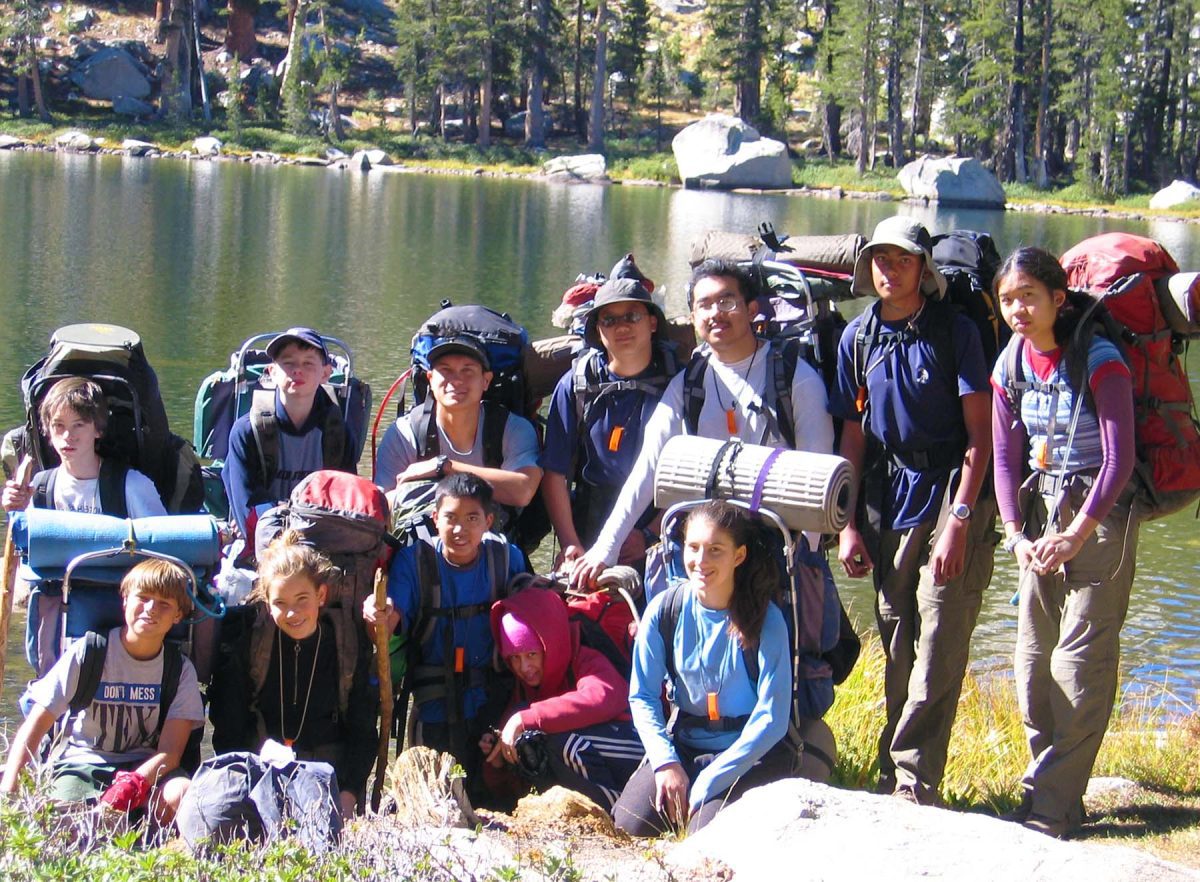
A History of UIMLA
In 1989, the European Mountain Leader Commission was formed to establish a consistent training standard for Mountain Leaders across the continent. The need for this arose following the 1958 formation of the European Economic Community (a predecessor to today’s European Union), which made it easier for Europeans to work across international boundaries.
The group created a qualification scheme for European Mountain Leaders in 1992.
The value of a global standard open to mountain leaders outside of Europe became clear, and in 2004, UIMLA was established, replacing the European body.
A revised standard for access to and practice of the profession of the International Mountain Leader was approved in 2012.
Today, UIMLA’s aims include:
- Advance recognition of the profession of International Mountain Leader
- Support sustainable development of mountainous regions
- Support the ability for IMLs to work in all mountainous countries
- Develop the International Mountain Leader profession
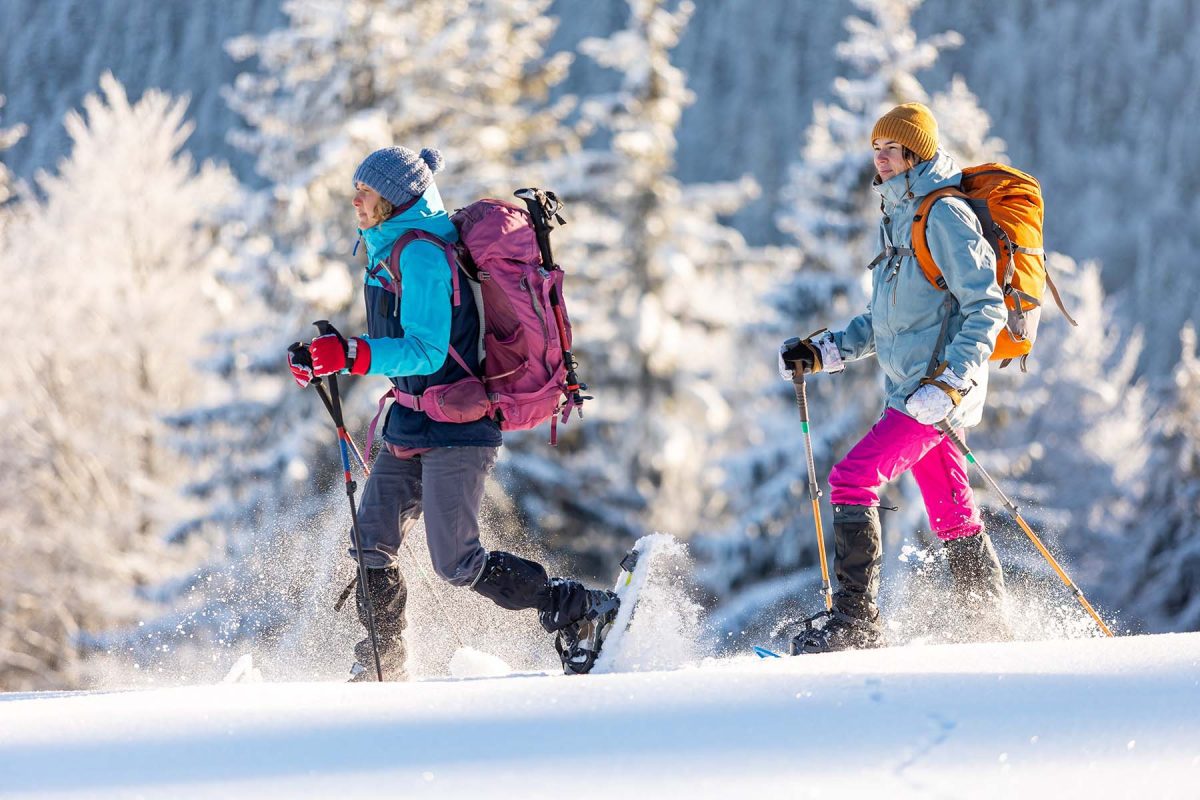
UIMLA and Viristar
A number of leaders from UIMLA member associations have participated in Viristar’s Risk Management for Outdoor Programs training, and interest arose in making the training widely available to International Mountain Leaders around the world.
Wilderness risk management is an important skill for International Mountain Leaders, and UIMLA and Viristar formalized an agreement for IMLs to be able to access Viristar’s outdoor safety training at a substantial discount.
Viristar is pleased to support the global community of International Mountain Leaders, and to collaborate with UIMLA and its global network of mountain leader associations to advance the quality and safety of mountain adventures worldwide.
